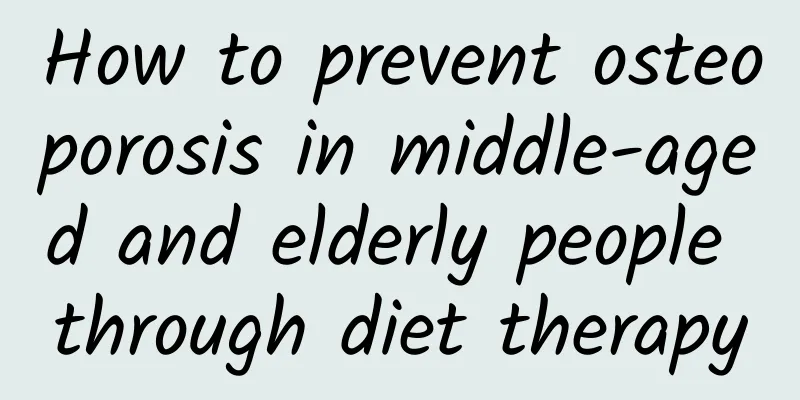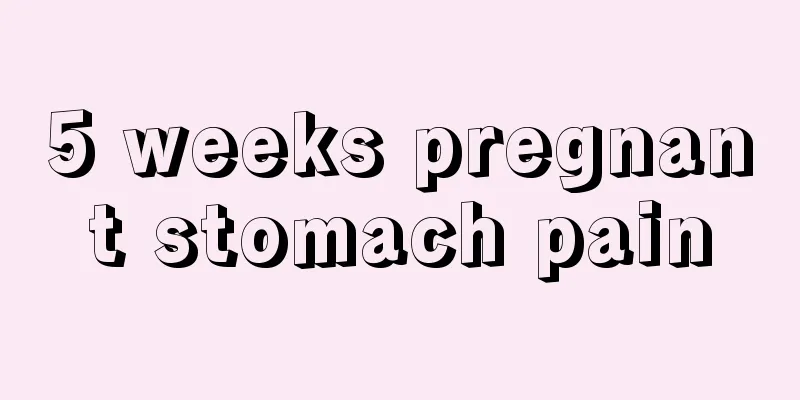How to prevent osteoporosis in middle-aged and elderly people through diet therapy

|
As we age, the loss of calcium in the human body accelerates, which leads to the occurrence of osteoporosis. According to relevant reports, the number of osteoporosis patients in my country is very large, with more than 90 million people suffering from osteoporosis to varying degrees. Middle-aged and elderly people are a high-risk group for osteoporosis, so do you know how to prevent osteoporosis in the middle-aged and elderly through diet therapy? 1.What is osteoporosis? Osteoporosis is a systemic bone metabolic disease, which is mainly manifested by the degradation of bone microstructure, bone loss, increased bone brittleness and easy fracture. Osteoporosis is more common in the elderly, especially in postmenopausal women. Hyperthyroidism, malnutrition, long-term bed rest, Cushing's syndrome, etc. may also cause osteoporosis. 2.What are the types and dangers of osteoporosis? According to the causes of the disease, it can be divided into primary osteoporosis and secondary osteoporosis. With the development of the aging population in my country, the incidence of primary osteoporosis has increased year by year. The occurrence of osteoporosis is relatively hidden, but the consequences are extremely serious. Osteoporosis is prone to secondary fractures and various fracture complications, which may lead to death or disability of patients, bringing great pain to patients and their families. 3.Why does osteoporosis occur? According to relevant research, the risk of women suffering from osteoporosis is three times that of men, and 33.33% of postmenopausal women have varying degrees of osteoporosis. In traditional Chinese medicine, primary osteoporosis is divided into categories such as "fracture", "bone arthritis", "low back pain" and "bone fistula". The occurrence of this disease is related to the malnutrition of tendons and bones and kidney deficiency in the elderly, which leads to bone deformation and damage. Excessive labor, dietary injuries, and congenital deficiencies are the root causes of this disease. It is based on kidney deficiency and marrow reduction, manifested as blood stasis, wind, cold and dampness, and its pathological basis is bone damage. Osteoporosis is a slow process. In daily life, diet can be used to delay bone aging and avoid or reduce osteoporosis. 4.What dietary therapies can be used to prevent osteoporosis? 4.1 Increase vitamin D and calcium intake Calcium is one of the main elements of bone formation, so we should pay attention to calcium supplementation in daily life. If the human body gets enough calcium, it can delay bone loss and bone aging, since it maintains the health of bones. The "Dietary Guidelines for Chinese Residents (2022 Edition)" mentions that the average person should consume 800 mg of calcium per day, and recommends that middle-aged and elderly people over 50 years old consume 1000 mg of calcium per day. It is generally recommended to take calcium through food. Milk and dairy products, beans and bean products, kelp, shrimp skin, high-calcium and low-oxalic acid vegetables are relatively high in calcium and should be eaten more. Today, consume more than 300 ml of milk per day, and eat other foods rich in calcium ions to meet the body's needs for calcium. If you can't get enough calcium through food, you can take calcium supplements appropriately. It is worth noting that calcium supplements should be appropriate. If you take in large doses of calcium, it may increase the risk of cardiovascular disease and kidney stones. Vitamin D can promote calcium absorption and help calcium to form bones, thereby improving people's balance ability, strengthening muscle strength, and reducing the risk of falling. Vitamin D can be obtained through ultraviolet radiation or through food, but the vitamin D content in food is low. Fish, milk and dairy products, egg yolk animals, liver, etc. contain vitamin D, so you can eat more of them. At the same time, you should get more sun exposure in your daily life, preferably 30 minutes in the sun every day, which can avoid vitamin D deficiency, promote the synthesis of vitamin D in the body, and promote the body's absorption of calcium. Combined with reasonable exercise, it can increase bone mass and promote bone development. 4.2 Increase protein intake Protein is one of the main components of bones, accounting for about 50% of the bone volume, and plays an extremely important role in the synthesis of osteocollagen. Adequate protein intake in the human body is conducive to maintaining and enhancing muscle function and bone function, and reducing the risk of osteoporosis and complications after fractures. Therefore, protein should be consumed in moderation in daily life, with a daily protein intake of 0.8-1.0g/kg, and protein should be evenly distributed in three meals a day. Foods such as fish, beans and bean products, eggs, poultry, milk and its products are rich in protein and should be eaten more. 4.3 Other Elements In addition to the nutrients such as protein, calcium, vitamins, etc. consumed daily, it is recommended that the elderly can appropriately supplement sodium, phosphorus, magnesium and other elements. The above nutrients all have a certain effect on bone health. 4.4 Low-salt diet is recommended Excessive sodium intake will affect calcium synthesis and cause calcium loss. Therefore, sodium intake should be reduced in daily life, and the sodium intake should be controlled within 5g. At the same time, the intake of high-salt foods such as pickles and salted duck eggs should be reduced. Conclusion: Bone health is very important. We should eat a low-salt diet in our daily life and consume an appropriate amount of nutrients such as protein, vitamin D, calcium, etc. to avoid the occurrence of osteoporosis. Author: Yu Jiejing and Mo Liangping Department of Bone and Pain Management, Wuzhou Red Cross Hospital |
>>: Pre-hospital treatment of severed fingers
Recommend
Should I sleep on my left side or on my right side during the second trimester? What is the best sleeping position during the second trimester?
We all know that after a woman becomes pregnant, ...
What happens if the leucorrhea is stringy before menstruation?
Nowadays, women suffer from many gynecological di...
Red pimples on private hair
For many female friends, if there is discomfort i...
Doctors at Peking Union Medical College say | Feeling stuffy, short of breath, and unable to cough up phlegm? Doctors teach you how to "lie down" to get good blood oxygen levels
Stuffy, short of breath, can't cough up phleg...
The invisible killer of patients with cirrhosis: How much do you know about hepatic encephalopathy?
Author: Xie Wen, Chief Physician, Beijing Ditan H...
How long does it take to do nt during pregnancy
With the gradual development of medical technolog...
Normal picture of cervicoscopy
Many women do not know how many gynecological pro...
What kind of exercise can girls do to grow taller?
A beautiful lady is a gentleman's dream. Tall...
AppData: Facebook Android app has more daily active users than iPhone
The latest data released by market research firm ...
What is the cause of menstrual blood clots?
When women have their period, a lot of blood will...
What is the best way to treat double uterus?
If a woman is found to have a double uterus durin...
Subtle physiological changes of women during ovulation
Every month, a woman's body undergoes some su...
How long does it take to recover from hand numbness after childbirth?
The body is very weak after childbirth, and it ne...
How long does it take to get menstruation after abortion and what should you pay attention to?
With the development of society, the relationship...
A 27-year-old woman was diagnosed with gastric cancer. Three kinds of food that have been stored in the refrigerator for a long time may be the "accomplice" of cancer.
Ms. Zhang, a 27-year-old girl who has moved to Be...









